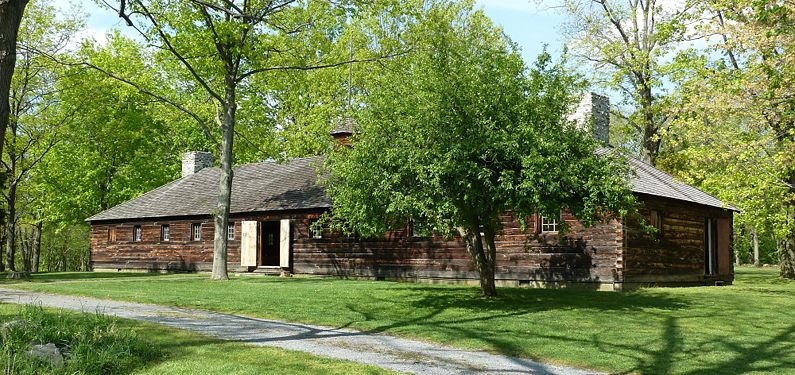Origins
The victory and subsequent surrender of the British at the battle of Yorktown signaled the end of the Revolution. By the fall of 1782 the officers became more focused on politics than on the British. Most officers had not be paid since joining the military and thought once the army was sent home none of them would ever be paid. Congress had discussed providing the officers half pay for life, or some fixed period, or providing Commutation, which was a single lump sum payment. But since the current national government under the Articles of Confederation had no provision for taxation, there was be no way to fund any of these plans without changes to the Articles that had to be approved by every state. Congress suggested that the states should be responsible for the funding.
The army sent a delegation to meet with Congress in Philadelphia to talk about the sufferings of the officers and the potential outcomes if the officers were not paid. Inaction by the Congress drew criticism of the Articles, with the delegation arguing about the unwillingness of the states to “cement and invigorate” the national government. Rumors began to circulate in Philadelphia threatening that the army would not disband until the issue was resolved. In Newburgh, the winter quarters of the army, some officers called for a meeting to criticize the army’s “moderate” approach to working with Congress that was not working, and instead to take a more forceful approach to get what the officers wanted. The meeting would be held on May 15. However, in an unexpected visit by General Washington, he asked them to “give one more distinguished proof of unexampled patriotism and patient virtue” by placing their “full confidence in the purity of Congress.” Washington had averted a mutiny.
While this was going on, General Henry Knox was working on an idea to establish a hereditary society to preserve the “mutual friendships which have been formed under the pressure of common danger.” This was something that he had been talking about since 1776 and with the end of the war in sight it was time to act on this idea. In addition to preserving relationships, he thought it would be a source of charity for those military friends and families who would need it. With the uncertainties of compensation for the officers, Knox said “If Congress would not provide for the officers, they would do it themselves.” This gave the officers hope that a formal organization, the Society of the Cincinnati, would be formed to preserve military friendships and families but would also be available to remind the Congress of their sacrifices to preserve our liberty.
The General Society of the Cincinnati was formed on May 13, 1783 followed by the creation of thirteen state societies and a French society. The New York Society was formed on June 19, 1783 and by November 21, 1783 all thirteen state societies were organized. The French Society would be added to the roster in January 1784.
Note: The source of the above information is a publication by Minor Myers Jr, "Liberty without Anarchy, A History of the Society of the Cincinnati." "Liberty without Anarchy" is available from the General Society of the Cincinnati. If you are interested in obtaining this book, please contact www.societyofthecincinnati.org/visit/shop.


